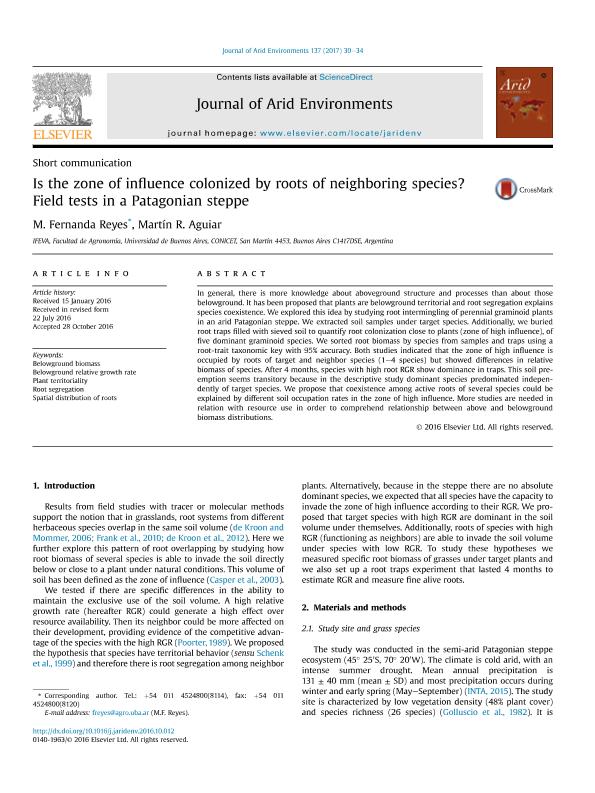Artículo
Is the zone of influence colonized by roots of neighboring species? Field tests in a Patagonian steppe
Fecha de publicación:
02/2017
Editorial:
Academic Press Ltd - Elsevier Science Ltd
Revista:
Journal of Arid Environments
ISSN:
0140-1963
Idioma:
Inglés
Tipo de recurso:
Artículo publicado
Clasificación temática:
Resumen
In general, there is more knowledge about aboveground structure and processes than about those belowground. It has been proposed that plants are belowground territorial and root segregation explains species coexistence. We explored this idea by studying root intermingling of perennial graminoid plants in an arid Patagonian steppe. We extracted soil samples under target species. Additionally, we buried root traps filled with sieved soil to quantify root colonization close to plants (zone of high influence), of five dominant graminoid species. We sorted root biomass by species from samples and traps using a root-trait taxonomic key with 95% accuracy. Both studies indicated that the zone of high influence is occupied by roots of target and neighbor species (1–4 species) but showed differences in relative biomass of species. After 4 months, species with high root RGR show dominance in traps. This soil pre-emption seems transitory because in the descriptive study dominant species predominated independently of target species. We propose that coexistence among active roots of several species could be explained by different soil occupation rates in the zone of high influence. More studies are needed in relation with resource use in order to comprehend relationship between above and belowground biomass distributions.
Archivos asociados
Licencia
Identificadores
Colecciones
Articulos(IFEVA)
Articulos de INST.D/INV.FISIOLOGICAS Y ECO.VINCULADAS A L/AGRIC
Articulos de INST.D/INV.FISIOLOGICAS Y ECO.VINCULADAS A L/AGRIC
Citación
Reyes, María Fernanda; Aguiar, Martin Roberto; Is the zone of influence colonized by roots of neighboring species? Field tests in a Patagonian steppe; Academic Press Ltd - Elsevier Science Ltd; Journal of Arid Environments; 137; 2-2017; 30-34
Compartir
Altmétricas




